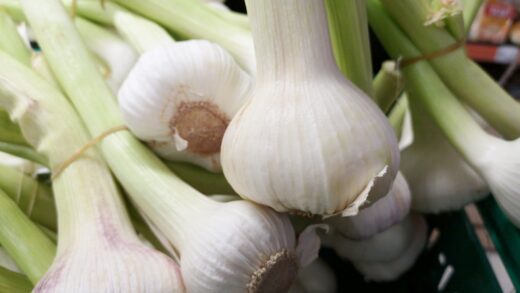Sea thrift, a charming and resilient perennial, brings a touch of coastal beauty to any garden setting. Its dense, grass-like foliage forms neat mounds from which long, slender stems emerge, topped with globe-shaped clusters of pink, white, or lilac flowers. This plant is celebrated not only for its delicate appearance but also for its remarkable toughness, thriving in conditions where many other plants would falter. Properly understanding its natural inclinations is the first step toward successful cultivation, ensuring it remains a vibrant and healthy feature in your landscape for years to come. Its adaptability makes it an excellent choice for rock gardens, coastal plantings, and border edges, providing long-lasting color and texture with minimal fuss.
Cultivating sea thrift successfully begins with appreciating its origins in coastal environments, which dictates its fundamental needs. This plant is naturally adapted to sandy, well-draining soils and exposure to salt spray and strong winds, making it incredibly durable. Replicating these conditions is key to its health, so avoid heavy clay soils that retain excessive moisture, as this is the primary cause of root rot. The foliage forms a low, evergreen tussock, which provides year-round interest even when the plant is not in bloom. This evergreen nature means it contributes to garden structure throughout the seasons, offering a consistent green presence.
The flowering period of sea thrift is another of its significant attractions, typically beginning in late spring and often continuing sporadically throughout the summer. The spherical flower heads are composed of many tiny individual flowers, creating a delightful pom-pom effect that dances above the foliage on leafless stems. These blooms are not only visually appealing but also attract a variety of pollinators, including bees and butterflies, contributing to the biodiversity of your garden. The range of available cultivars offers various shades, from deep magenta to pure white, allowing for versatile design applications.
Finally, the low-maintenance nature of sea thrift makes it an ideal plant for both novice and experienced gardeners. It does not require frequent fertilization, is largely resistant to pests and diseases, and is exceptionally drought-tolerant once established. This resilience means you can enjoy its beauty without a demanding care regimen. The primary tasks involve providing the right initial planting conditions and performing occasional maintenance, such as deadheading, to encourage further flowering and maintain a tidy appearance. Its self-sufficient character allows it to thrive on neglect, a rare and valuable trait in ornamental plants.
Understanding the natural habitat
To truly master the care of sea thrift, one must look to its natural coastal habitats for inspiration and guidance. This plant is commonly found along the coastlines of the Northern Hemisphere, clinging to cliffs, sand dunes, and salt marshes. Its ability to thrive in these challenging environments is a testament to its evolutionary adaptations, which include a deep taproot system for anchoring itself and sourcing water from arid soils. This taproot is crucial for its survival, making it drought-resistant but also sensitive to being transplanted once mature. Therefore, choosing a permanent location from the outset is highly recommended for its long-term success.
More articles on this topic
The soil in these native settings is typically low in nutrients, sandy or gravelly, and exceptionally well-drained. Sea thrift has evolved to flourish in these lean conditions, which means it is intolerant of overly rich, fertile garden soils. Excessive nutrients, particularly nitrogen, can lead to lush, weak foliage at the expense of flowers and can make the plant more susceptible to fungal diseases. When preparing a planting site, the goal is to mimic this poor, free-draining substrate rather than amending the soil with copious amounts of compost or manure. This counterintuitive approach is fundamental to its health.
Exposure to full sun and open, airy conditions is another critical element derived from its natural habitat. Sea thrift does not compete well with larger, more aggressive plants that may shade it out or crowd its root system. It needs direct sunlight for most of the day to produce a robust display of flowers and maintain its compact, mounding habit. Inadequate light will result in leggy growth, fewer blooms, and a general lack of vigor. Therefore, selecting a location that receives at least six hours of direct sunlight is non-negotiable for this sun-loving perennial.
Furthermore, the plant’s tolerance to salt spray is a remarkable adaptation that makes it a prime candidate for seaside gardens. The waxy texture of its grass-like leaves helps to minimize water loss and protect it from the desiccating and corrosive effects of salt-laden winds. While this specific trait may not be relevant for inland gardens, it underscores the plant’s overall hardiness and its preference for excellent air circulation. Good airflow around the plant helps to prevent the development of fungal issues, particularly in more humid climates away from the coast.
Ideal soil and location
Choosing the right location and preparing the soil correctly are the most critical factors in the successful cultivation of sea thrift. This plant demands a spot that receives full, direct sunlight for the majority of the day, as this is essential for vigorous growth and prolific flowering. A south-facing or west-facing aspect is typically ideal, ensuring it gets the light intensity it needs. Without adequate sun, the plant will become weak and spindly, and its flower production will be significantly diminished, undermining its ornamental value.
More articles on this topic
The soil must be, above all, exceptionally well-drained. Sea thrift is highly susceptible to root and crown rot if it is planted in heavy, waterlogged conditions, such as dense clay soil. To ensure proper drainage, you can amend the planting area with horticultural grit, coarse sand, or fine gravel to improve its porosity. Alternatively, sea thrift is an outstanding candidate for raised beds or rock gardens, where drainage is naturally superior. The goal is to create a substrate where water passes through freely, preventing the roots from sitting in moisture for extended periods.
In terms of soil composition and pH, sea thrift is not particularly demanding, but it performs best in neutral to slightly alkaline soils. It is well-adapted to poor, infertile soils and does not require a nutrient-rich environment to thrive. Avoid adding large quantities of organic matter like compost or manure at planting time, as this can lead to overly lush foliage, reduced flowering, and a weaker plant structure. A simple, lean soil mixture is far more beneficial and closer to the conditions of its native habitat.
When considering planting companions, select other species that share similar requirements for sun and drainage. Plants such as sedums, thyme, lavender, and other Mediterranean or alpine species make excellent partners for sea thrift. These combinations create a cohesive and water-wise garden design that is both beautiful and low-maintenance. Ensure there is enough space between plants to allow for good air circulation, which is vital for preventing fungal diseases and allowing each plant to reach its full potential without being overshadowed.
Watering and feeding practices
Once established, sea thrift is remarkably drought-tolerant, a trait inherited from its coastal, sandy origins. Its deep taproot is highly efficient at seeking out moisture deep within the soil profile, allowing it to withstand extended dry periods. For newly planted specimens, consistent watering is necessary during the first growing season to help them establish a strong root system. Water them thoroughly once a week, or more frequently in very hot weather, but always allow the soil to dry out between waterings to prevent oversaturation.
After the first year, the need for supplemental watering decreases dramatically. In most temperate climates, established plants will require very little, if any, additional irrigation, relying solely on natural rainfall. Overwatering is a far greater threat to sea thrift than underwatering. The most common mistake gardeners make is treating it like a more thirsty perennial, which can quickly lead to fatal root rot. Always check the soil moisture before watering; if it feels damp even an inch below the surface, it is best to wait longer.
When it comes to feeding, a minimalist approach is essential for this plant. Sea thrift thrives in nutrient-poor soils and does not require regular fertilization. Applying fertilizer, especially those high in nitrogen, can be detrimental, promoting weak, floppy growth and inhibiting flower production. The plant may look greener, but it will be structurally weaker and less resilient. This is a classic case where less is definitely more for the health and performance of the plant.
If your soil is exceptionally poor or if the plant shows signs of nutrient deficiency, such as yellowing leaves, a single, very light application of a balanced, slow-release fertilizer in early spring can be beneficial. However, for most garden situations, this is entirely unnecessary. The plant is perfectly adapted to extract the nutrients it needs from lean soil. Focusing on providing the right soil structure and drainage is far more important than any feeding regimen.
Deadheading and ongoing maintenance
Regular deadheading is the most important ongoing maintenance task for keeping sea thrift looking its best and encouraging a longer blooming season. After the vibrant, globe-like flowers begin to fade and turn brown, they should be removed promptly. This process not only improves the plant’s appearance by keeping it neat and tidy but also prevents the plant from expending energy on seed production. By redirecting this energy, you encourage the plant to produce a new flush of flowers, often extending the display well into the summer months.
To deadhead effectively, trace the spent flower stalk down to its base, where it emerges from the foliage mound, and snip it off cleanly with a pair of sharp scissors or secateurs. Simply pulling the stalks can risk damaging the crown of the plant, so using a tool is recommended for a precise cut. This simple activity, performed every week or two during the flowering season, makes a significant difference in the overall performance and aesthetic appeal of your sea thrift planting. It is a small investment of time that yields substantial rewards.
Beyond deadheading, sea thrift requires very little in terms of regular pruning. The foliage forms a naturally dense and tidy cushion that generally maintains its shape without intervention. However, over time, the center of the clump can become woody and less vigorous, with new growth appearing more sparsely. When you observe this happening, typically after several years, it is a sign that the plant would benefit from being divided, which is best done in the spring.
As an evergreen perennial, the foliage of sea thrift persists through the winter, providing valuable structure and color. In late winter or early spring, you may notice some of the older, outer leaves have turned brown and died back. It is good practice to gently “comb” through the foliage with your fingers or a small rake to remove this dead material. This annual cleanup improves air circulation through the clump, which helps to prevent fungal issues and makes way for fresh, new growth to emerge.
Common challenges and solutions
Despite its hardy nature, sea thrift can occasionally encounter a few problems, with the most significant threat being root and crown rot. This issue is almost invariably caused by poor drainage and waterlogged soil conditions, rather than a specific pathogen attacking a healthy plant. Symptoms include yellowing or browning of the foliage, a mushy crown at the base of the plant, and a general failure to thrive. Prevention is the only effective cure; ensure the plant is sited in very well-draining soil from the outset, and be extremely cautious not to overwater it.
In very humid or wet climates, certain fungal diseases like rust can sometimes appear on the foliage. Rust manifests as small, orange or brown pustules on the undersides of the leaves, which can lead to leaf discoloration and reduced vigor if the infection is severe. The best way to manage this is by promoting good air circulation around the plants. Avoid overcrowding and ensure the area is not overly damp. If rust does appear, remove and destroy the affected leaves immediately to prevent its spread.
Pests are rarely a significant issue for sea thrift, as its tough, waxy leaves are not particularly palatable to most common garden insects. However, in some situations, aphids may colonize the flower stems or new growth, particularly on plants that are stressed. A strong jet of water from a hose is often sufficient to dislodge a minor infestation. For more persistent problems, an application of insecticidal soap can be an effective and environmentally friendly solution.
Another common challenge is a gradual decline in flowering and vigor over several years, often accompanied by the center of the plant dying out. This is a natural aging process for many clumping perennials and is not a sign of disease. The solution is to rejuvenate the plant through division. Carefully lift the entire clump in the spring, separate the healthy, vigorous outer sections from the old, woody center, and replantit these new divisions. This process will revitalize your stock, providing you with new plants and ensuring a continuous, healthy display in your garden.




















